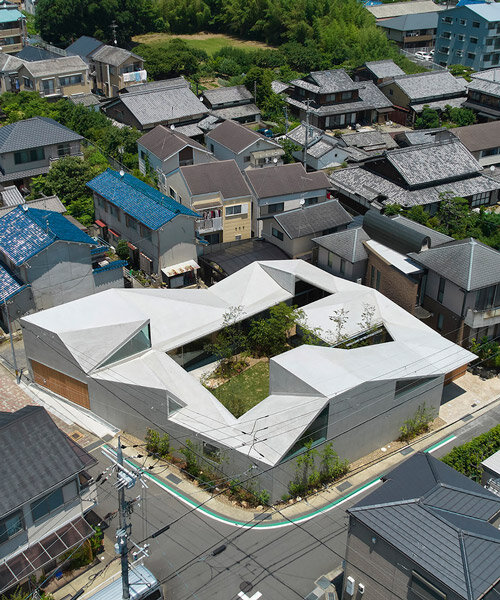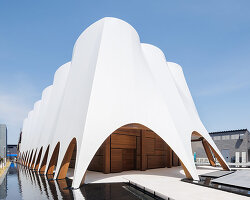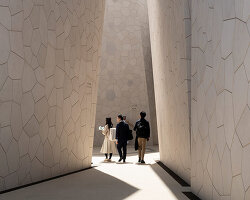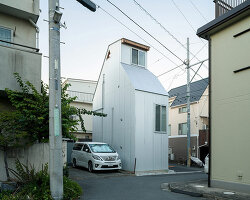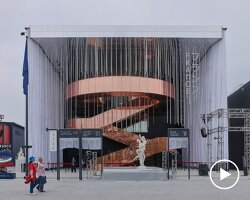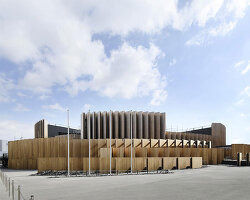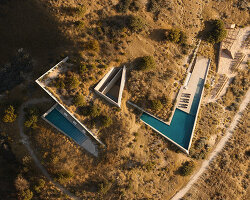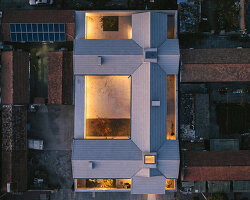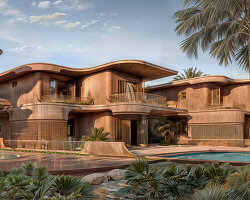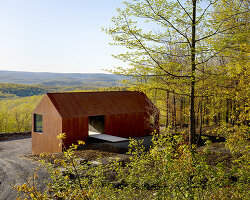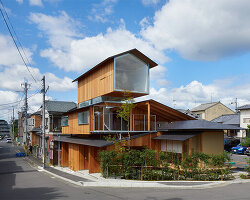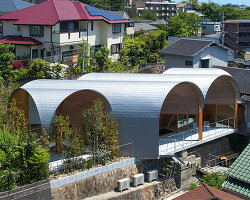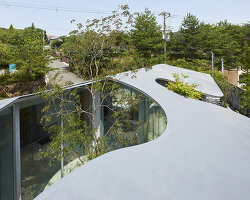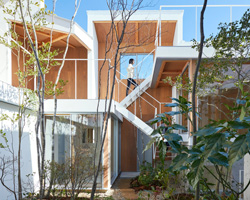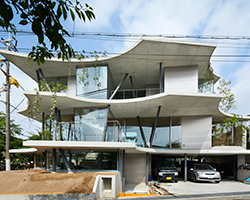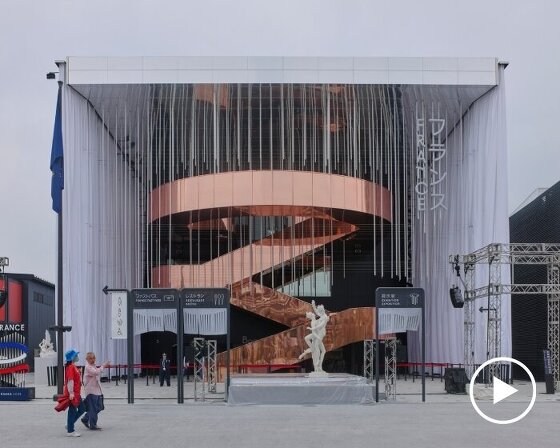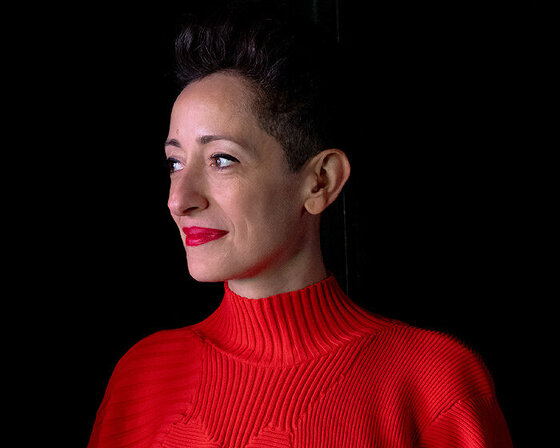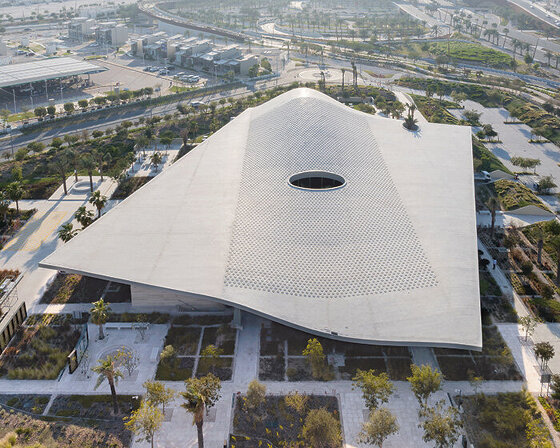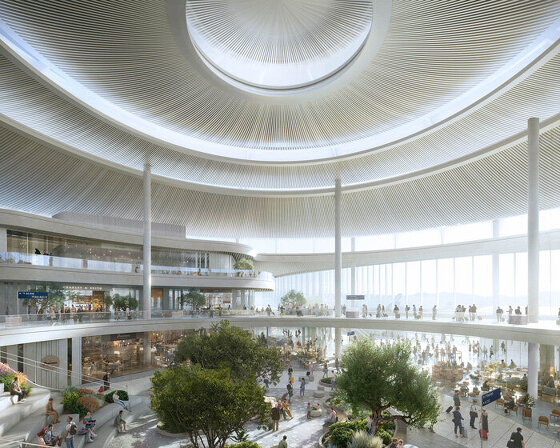learning from the rural heritage of muko
Tomohiro Hata Architect & Associates’ House in Muko is a contemporary interpretation of a traditional Kyoto farmstead. While the residential area is surrounded by sprawling farmland and bamboo forests, the project responds to the region’s distinctive architectural heritage while addressing the demands of modern living. Historically, this area of Kyoto Prefecture has been characterized by a unique settlement pattern — farmhouses clustered around a central dwelling, enclosed by stone walls. However, rapid urbanization has led to the demolition of many of these traditional structures, disrupting the area’s historic fabric.
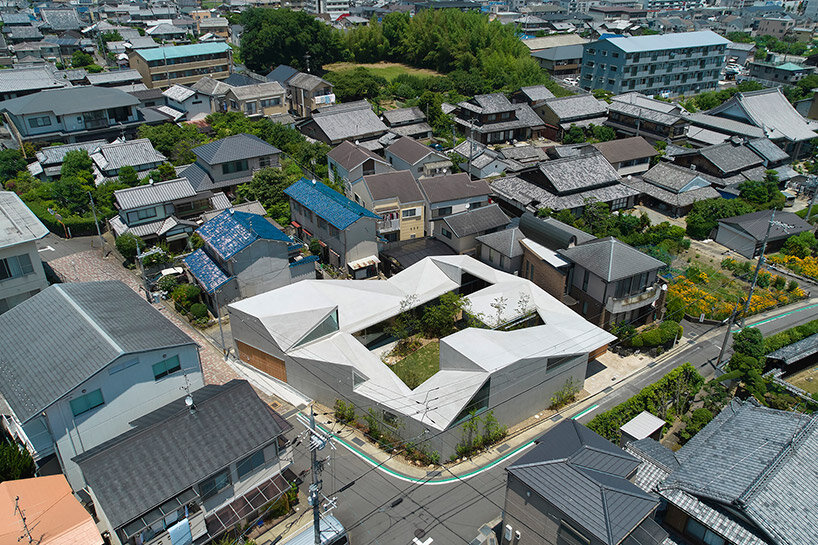
images © Toshiyuki Yano
architect tomohiro hata bridges past and present
The design team at Tomohiro Hata Architect & Associates faced the challenge of creating a new home that respected this rich history without simply replicating it. They sought to bridge the gap between the past and present, crafting a dwelling that is both rooted in the local context and responsive to contemporary lifestyles. At the core of the traditional farmhouse are two key elements — a spacious living area that encompasses agricultural fields, and a hierarchical arrangement of buildings centered around the main house. These features reflect the area’s agrarian past and deeply connect to its cultural identity.
In contrast, modern residential architecture often prioritizes open, flexible spaces and a breakdown of hierarchical structures. The architects sought to reconcile these two approaches by reimagining the traditional farmhouse as a series of interconnected, yet independent living spaces.
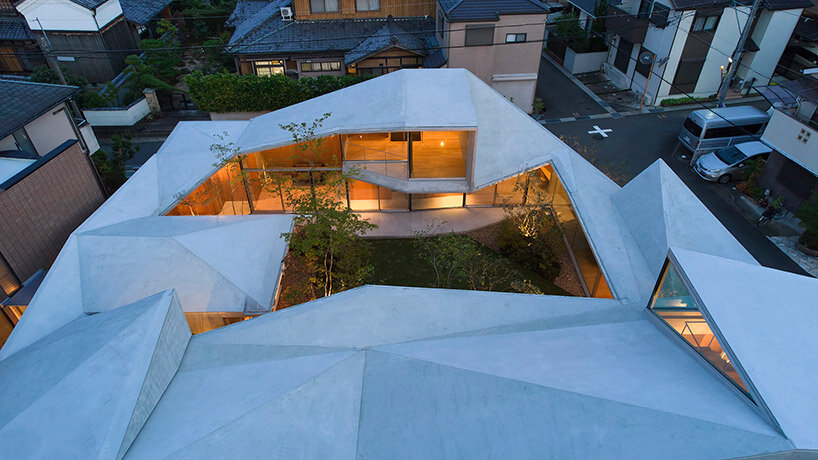
House in Muko, Kyoto, is a modern interpretation of a traditional farmhouse
clustered spaces encircle a courtyard
The resulting design by Tomohiro Hata Architect & Associates is a cluster of buildings that appear to interlock and flow into one another, creating a dynamic and interconnected living environment in Muko. This approach departs from the hierarchical structure of the traditional farmhouse while preserving the concept of a communal living space. By carefully considering the site’s history and the evolving needs of its inhabitants, House in Muko introduces a compelling new vision for contemporary residential architecture. It is a project that respects the past while enriching the present, demonstrating the potential for architecture to lend a strong connection between people and place.
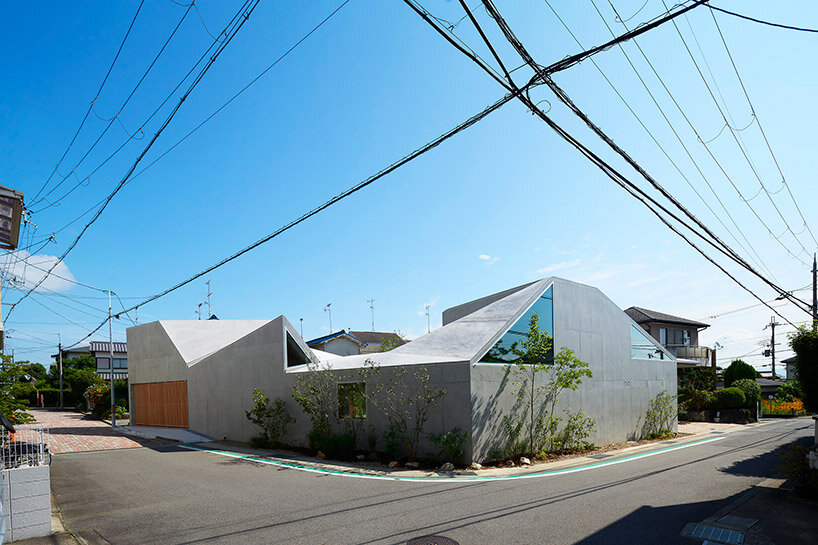
the area surrounding the neighborhood is characterized by farmland and bamboo forests
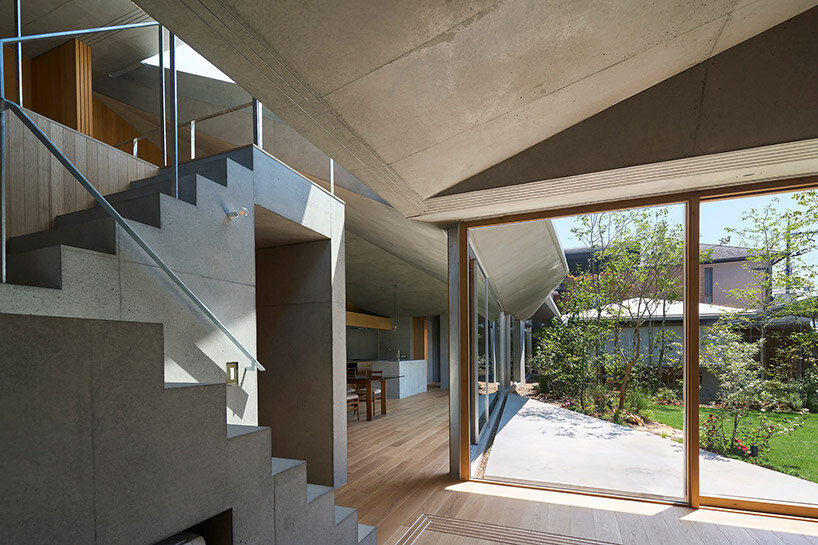
the architects balance the region’s historical architectural style and contemporary living needs
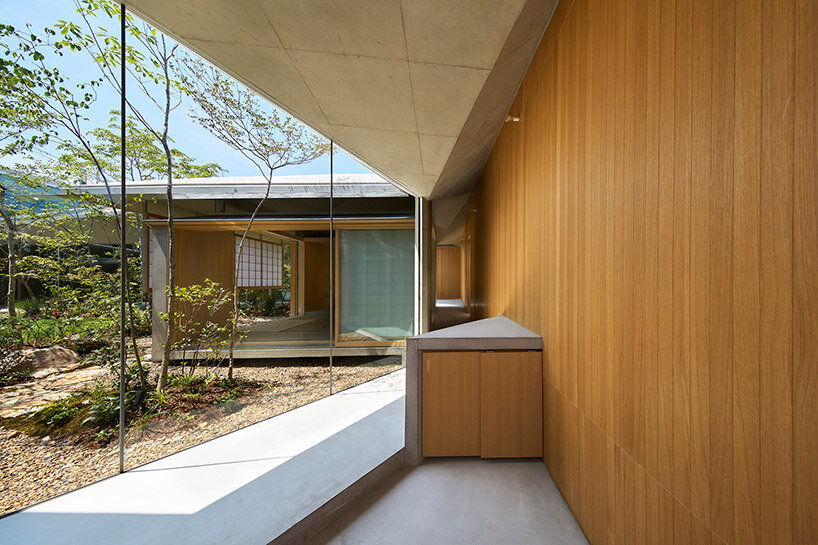
traditional farmhouses in the area feature living areas encircling agricultural fields
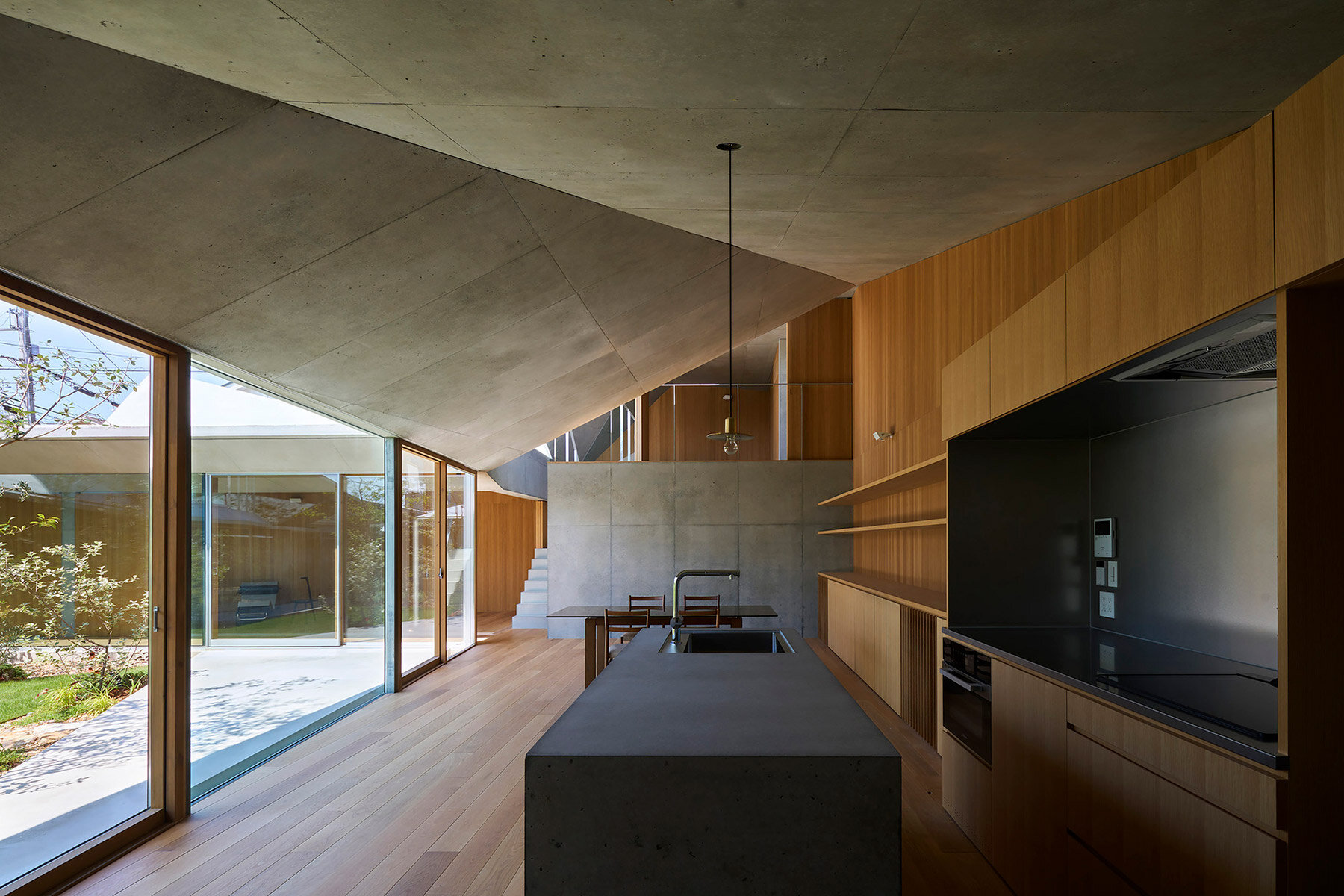
modern homes often prioritizes open spaces and a breakdown of hierarchical structures
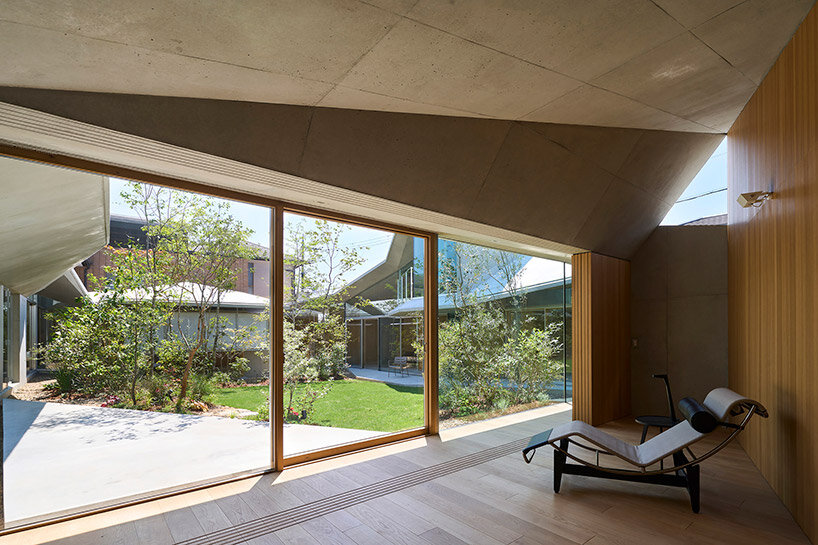
the home integrates traditional and modern elements, lending a cluster of interconnected living spaces
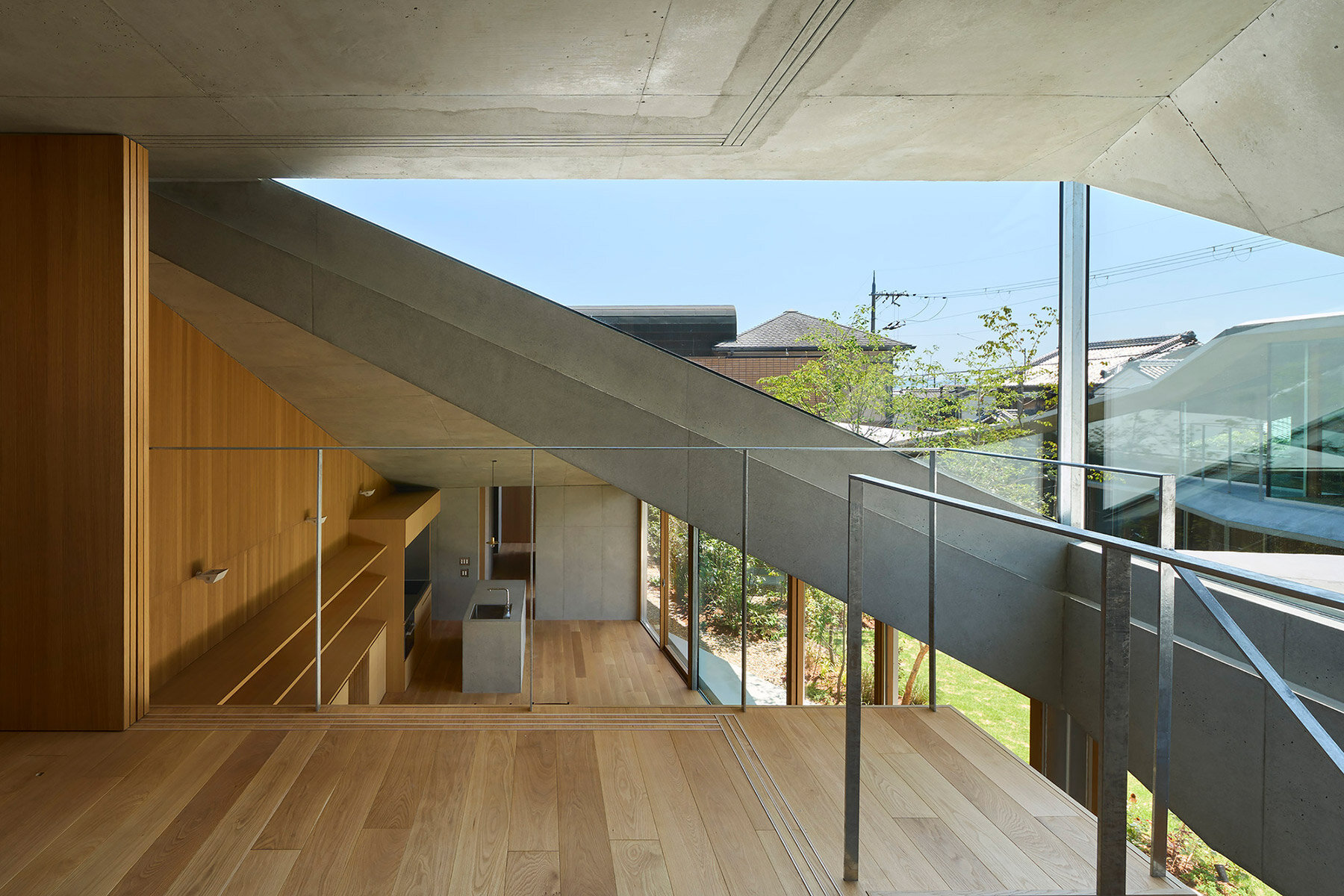
the design fosters a connection between the inhabitants and the surrounding landscape















project info:
project title: House in Muko
architecture: Tomohiro Hata Architect & Associates | @tomohiro_hata_archi
location: Kyoto, Japan
built area: 260 square meters
lead architects: Tomohiro Hata, Kazuki Kimura, Misato Takagi
structural engineers: Takashi Manda Structural Design
general contractors: Asa Kenchiku co., ltd.
structural engineer: Takashi Manda
completion: 2023
photography: © Toshiyuki Yano
